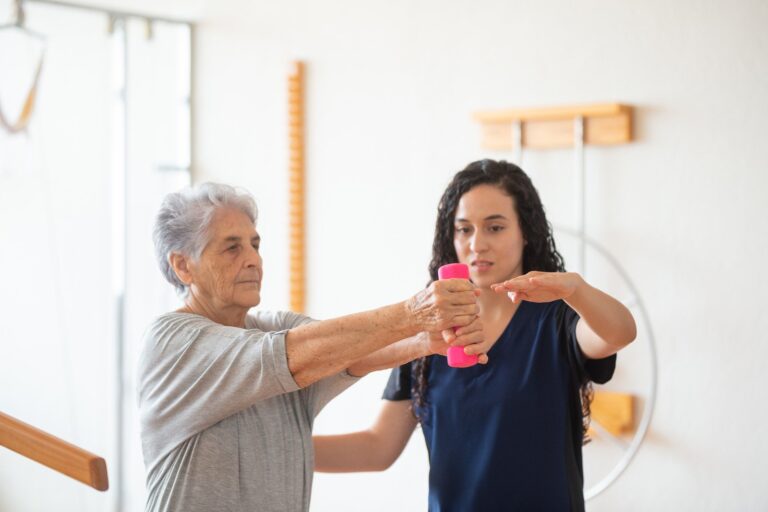Mental wellness and physical health are two sides of the same coin. The state of your mind directly impacts your body, and vice versa. This intricate connection forms the foundation of holistic health, emphasizing the balance between emotional well-being and physical vitality. In this blog, we will explore the powerful interplay between mental and physical health and share actionable strategies to maintain harmony between the two.
Understanding the Mind-Body Connection
The mind and body constantly communicate through biochemical signals, forming a complex feedback loop. For example:
- Stress and Physical Health: Chronic stress triggers the release of cortisol, a hormone that can lead to inflammation, weakened immunity, and even heart problems.
- Physical Illness and Mental Health: A chronic illness can lead to feelings of anxiety, depression, or emotional fatigue.
The connection highlights the importance of addressing both mental and physical health in tandem for optimal well-being.
Mental Wellness and Its Impact on Physical Health
- Improved Immunity
Positive mental states, such as happiness and calmness, boost the immune system. Studies have shown that laughter and optimism can enhance the body’s ability to fight infections. - Better Heart Health
Mental stress increases blood pressure and heart rate, while relaxation techniques can lower these and reduce the risk of cardiovascular diseases. - Enhanced Energy Levels
Mental clarity and emotional stability prevent exhaustion, keeping your energy levels high throughout the day.

Physical Health and Its Impact on Mental Wellness
- Exercise as a Mood Booster
Physical activity releases endorphins, often called “feel-good hormones,” which alleviate symptoms of depression and anxiety. - Balanced Nutrition
The gut-brain axis plays a crucial role in mental wellness. Consuming whole, nutrient-rich foods supports brain function and emotional stability. - Quality Sleep
Sleep deprivation negatively affects mood, cognitive function, and overall mental health. Prioritizing restorative sleep promotes mental clarity and resilience.
Key Practices for Balancing Mental and Physical Health
1. Mindfulness and Meditation
Practicing mindfulness can reduce stress and anxiety while improving focus and physical relaxation. Simple daily meditation can create a calming effect on both mind and body.
2. Regular Physical Activity
Exercise, whether it’s a brisk walk, yoga, or gym workout, benefits mental and physical health simultaneously. Aim for at least 30 minutes of activity most days of the week.
3. Balanced Diet
Incorporate a diet rich in vegetables, fruits, lean proteins, and whole grains. Avoid excessive sugar, processed foods, and unhealthy fats that can disrupt your mood and energy.
4. Stress Management
Use stress-reducing techniques like deep breathing, progressive muscle relaxation, or journaling. A stress-free mind leads to a healthier body.
5. Social Connections
Strong social networks provide emotional support, reducing mental stress and promoting overall health.
Scientific Evidence Supporting the Connection
Several studies highlight the importance of the mind-body link:
- Harvard Research: Chronic stress is associated with heart disease, diabetes, and obesity.
- Gut-Brain Research: A healthy gut microbiome improves mental health, supporting theories about the gut-brain axis.
- Physical Activity Studies: Consistent exercise reduces symptoms of depression by up to 50%.
Practical Steps to Integrate Holistic Practices
- Start your day with 5 minutes of mindfulness meditation.
- Incorporate a 20-minute walk into your daily routine.
- Replace one processed meal with a wholesome, homemade dish.
- Create a gratitude journal to focus on positive moments each day.
- Schedule time for social activities or connect with loved ones virtually.
Before Conclusion: Tips for Long-Term Success
- Set Achievable Goals
Start small. Gradually build habits that contribute to both mental and physical wellness. - Seek Professional Support
If needed, consult therapists, dietitians, or fitness trainers for expert guidance. - Celebrate Progress
Acknowledge milestones, no matter how small, to maintain motivation and positivity.
Before Conclusion: Deepening the Understanding of the Mind-Body Connection
Emphasizing Preventative Care
The synergy between mental wellness and physical health highlights the importance of preventative care. Regular check-ups with healthcare providers, mental health screenings, and adopting healthy habits early in life can prevent chronic diseases and mental health conditions. Preventative measures like mindfulness training, yoga, and maintaining a healthy diet are cost-effective ways to build resilience and long-term wellness.
Cultural Perspectives on Mental and Physical Health
Across cultures, the connection between mind and body has been emphasized for centuries. For example:
- Eastern Medicine: Practices like acupuncture and Ayurveda are rooted in balancing mental and physical energies.
- Western Psychology: Cognitive Behavioral Therapy (CBT) demonstrates how changing thought patterns can alleviate physical symptoms like headaches or fatigue.
By integrating diverse cultural perspectives, individuals can choose methods that align with their beliefs and lifestyles.
Technology’s Role in Bridging the Gap
Modern technology offers innovative tools to enhance both mental and physical health. Apps for meditation, fitness tracking, and meal planning help people create a holistic wellness routine. Virtual therapy and telemedicine provide access to professionals who can guide individuals on their journey.
Addressing Barriers to Holistic Health
While the benefits are clear, barriers like financial constraints, lack of awareness, and stigma around mental health prevent many from fully embracing holistic care. Community initiatives, government policies, and workplace wellness programs can play a significant role in removing these obstacles.
Real-Life Success Stories
Hearing about individuals who have transformed their lives by balancing mental and physical health can inspire others. For instance:
- A person overcoming anxiety through consistent exercise and therapy.
- A busy professional managing chronic stress through mindfulness and dietary changes.

Encouraging Community Support
Engaging in group activities like fitness classes, support groups, or hobby clubs fosters a sense of belonging. Such social connections enhance mental health while encouraging physical activity and reducing isolation.
Conclusion
The interplay between mental wellness and physical health is undeniable. By embracing practices that address both, individuals can unlock their full potential and lead a more fulfilling life. Remember, the journey to holistic health is personal, and every small step counts. Take the time to nurture your mind and body—they’re your greatest assets for a happy and resilient life.







